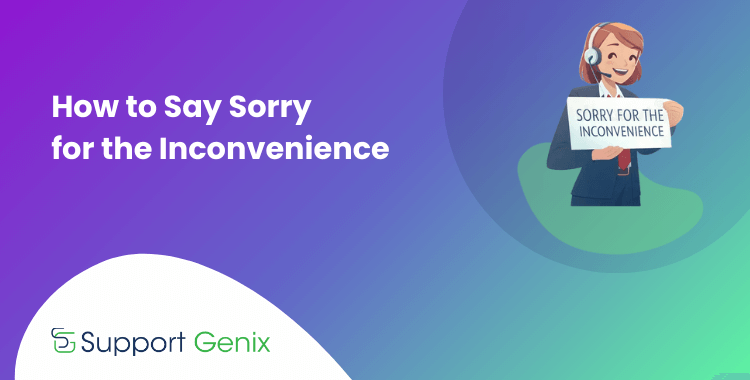What is Customer Segmentation: Everything You Need to Know
Do you want to understand what customer segmentation is and how it can benefit your business? If so, then you’re in the right place! This blog post will dive deep into customer segmentation and equip you with all the information you’ll need to know.
With customer segmentation, you can gain valuable insight into who your customers are and how to market to them more effectively – so let’s get started!
What is Customer Segmentation
As businesses strive to understand their customers better, they have been increasingly turning to customer segmentation strategies. So, what is customer segmentation? Simply put, it is a process that involves breaking down an organization’s customer base into distinct groups, each with its own unique characteristics, needs, and buying behaviors.

By dividing customers into these groups, businesses can tailor their marketing efforts and message to each one, increasing the chances of resonating with them and achieving better results. Moreover, customer segmentation can help organizations identify opportunities for growth and optimize their marketing and sales strategies, ultimately leading to higher customer satisfaction, loyalty, and revenue. As such, customer segmentation has become a go-to tool for businesses looking to gain a competitive edge in their industries.
Benefits of Customer Segmentation
Market segmentation, specifically customer segmentation, has proven to be a valuable strategy for businesses. By dividing a larger and diverse customer base into smaller, homogenous groups, businesses can tailor their marketing efforts to meet each group’s specific needs. This approach allows companies to target their desired audience and personalize their messaging more precisely.
Here are some benefits of customer segmentation:
A better understanding of customer needs:
Customer segmentation enables businesses to group customers based on their similar characteristics and preferences. This, in turn, helps businesses better understand their customers’ needs and tailor their products or services accordingly.
Improved customer engagement:
By segmenting customers into distinct groups, businesses can create more targeted and personalized marketing messages that resonate with each group.
More effective use of resources:
By focusing on the most profitable customer segments, businesses can allocate their resources more effectively and maximize their return on investment (ROI).
Increased customer retention:
By catering to the specific needs and preferences of each customer segment, businesses can improve customer satisfaction and increase customer retention rates.
Higher conversion rates:
Targeted marketing messages and personalized product offerings can lead to higher conversion rates, as customers are more likely to make a purchase when they feel that a business understands their unique needs.
Competitive advantage:
Customer segmentation can provide businesses with a competitive advantage by enabling them to differentiate themselves from competitors and provide unique value propositions to each customer segment.
Improved product development:
By understanding each customer segment’s unique needs and preferences, businesses can develop products or services that better meet those needs and preferences.
Support Genix
WordPress Support Ticket Plugin
Take Your Customer Support to The Next Level and Boost Customer Satisfaction Rates
Types of Customer Segmentation
Customer segmentation is a crucial element of modern business strategy. By dividing customers into groups based on variables such as demographics and behavior, companies can gain a deeper understanding of their audience and tailor their marketing efforts to meet their needs better.
There are many different types of customer segmentation:
Demographic segmentation:
This type of segmentation groups customers based on demographic characteristics such as age, gender, income, education, occupation, and family status.
Geographic segmentation:
This type of segmentation groups customers based on their geographic location, such as country, city, region, or climate zone.
Psychographic segmentation:
This type of segmentation groups customers based on personality traits, values, attitudes, interests, and lifestyles.
Behavioral segmentation:
This type of segmentation groups customers based on their behavior towards a product or service, such as usage frequency, loyalty, buying habits, and response to marketing efforts.
Benefit segmentation:
This type of segmentation groups customers based on the benefits they seek from a product or service, such as convenience, quality, affordability, or prestige.
Occasion segmentation:
This type of segmentation groups customers based on specific occasions or events, such as holidays, birthdays, or anniversaries.
Customer journey segmentation:
This type of segmentation groups customers based on where they are in the customer journey, such as first-time buyers, repeat customers, or loyal customers.
Channel segmentation:
This type of segmentation groups customers based on the channels they use to interact with a business, such as online, in-store, or mobile.
Recommended Blog for You
👉 Discover the Top Causes of Customer Churn and How to Prevent It
👉 The Key Elements of Good Customer Service
👉 The Top 10 Customer Service Software Solutions in 2023
👉 The Top Features to Look in WordPress Support Ticket Plugin
How to Use Customer Segmentation in Your Business
In today’s fast-paced business world, offering personalized products and services has become increasingly essential for maintaining customer loyalty and satisfaction. This is where the segmentation approach comes into play.
By dividing your customers into specific groups based on their shared demographics, interests, and behaviors, you can tailor your offerings to their unique needs and preferences. This not only increases current customer satisfaction but can also improve your marketing efforts, making them more effective and efficient.
Here are some ways to use customer segmentation in your business:
Tailor product offerings:
Use customer segmentation to understand the unique needs and preferences of each customer segment.
Personalize marketing messages:
Use customer segmentation to create personalized marketing messages for each customer segment. Personalizing marketing messages is a crucial aspect of any effective marketing strategy.
Develop targeted promotions:
Use customer segmentation to develop targeted promotions for each customer segment. This can help increase sales and customer loyalty.
Improve customer support:
Use customer segmentation to identify the most profitable customer segments and allocate more resources to provide excellent customer service.
Optimize pricing strategies:
Use customer segmentation to understand which customer segments are willing to pay premium prices for products and services.
Identify new market opportunities:
Use customer segmentation to identify new market opportunities that may have been overlooked. This can help businesses expand into new markets and increase sales.
Reduce marketing costs:
By targeting specific customer segments with personalized marketing messages, businesses can reduce marketing costs and improve ROI.
Measure and improve customer satisfaction:
Use customer segmentation to measure customer satisfaction across different segments.
Tips for Effective Customer Segmentation
As companies strive to understand their customers better, developing an effective customer segmentation strategy becomes increasingly important. It’s no longer sufficient to lump all customers into one broad category and market to them as a whole.
By dividing the customer base into smaller, more targeted segments, companies are able to deliver more personalized, relevant messaging that resonates with each group. This ultimately leads to increased engagement and customer loyalty.
Here are some tips for effective customer segmentation:
Define clear segmentation criteria:
Clearly define the criteria that will be used to segment customers, such as demographics, behavior, or psychographics. Ensure the criteria are relevant to the business and align with its goals.
Use data-driven insights:
Use data analytics tools to gather insights into customer behavior and preferences. Use this data to create more accurate and effective customer segments.
Test and refine segments:
Continuously test and refine customer segments to ensure that they are accurate and effective. Monitor how each segment responds to marketing efforts and adjust the segmentation criteria.
Avoid over-segmentation:
Over-segmentation can lead to too many small and ineffective segments. It’s important to find the right balance between granularity and practicality.
Ensure consistency across channels:
Ensure that customer segmentation is consistent across all channels of interaction with customers, such as in-store, online, and mobile. This ensures a consistent customer experience and avoids confusion.
Personalize marketing messages:
Use customer segmentation to personalize marketing messages and communication. This will increase engagement and improve the effectiveness of marketing efforts.
Consider the customer journey:
Consider the different stages of the customer journey when creating customer segments. Tailor marketing messages and product offerings to each stage of the journey to improve conversion rates and customer satisfaction.
Involve stakeholders:
Involve key stakeholders in the customer segmentation process, such as sales, marketing, and customer service teams. This ensures that customer segments are aligned with the needs and goals of the business.
Support Genix
WordPress Support Ticket Plugin
Take Your Customer Support to The Next Level and Boost Customer Satisfaction Rates
Final Thoughts on What is customer segmentation and How it can help your business
It is important to keep in mind that customer segmentation can be an invaluable tool for businesses, both large and small. By understanding the needs and spending habits of their target customers, businesses can optimize how they communicate with them, resulting in more sales and conversions. Investing in resources to support good customer segmentation practices can have a lasting positive effect on the success of your business.
Additionally, businesses need to remain aware of current trends to stay competitive. Retailers need to understand that customers want convenience and value. By fulfilling those wants, businesses can gain loyal customers who will help solidify their bottom line.



